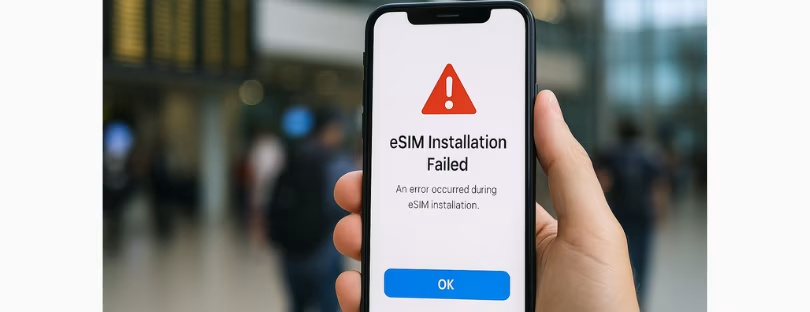
Debunking 6 Common Myths About eSIMs
Technology is becoming more convenient and easier to use than ever before. The advent of eSIMs has offered customers a more flexible way of using their various smart devices since it provide cellular data and wireless service at cost-effective rates. Common Myths About eSIMs
eSIMs became famous when introduced with the Google Pixel phone and iPhone XS and iPhone XR lines and beyond, allowing people to use it instead of physical SIM cards that complicate communication processes especially when traveling abroad. With the ability to access wireless data wherever you go, eSIMs have become a valuable tool for the modern individual. However, even with such useful technology available, many myths surround eSIMs and their utility.
Here are six common myths about eSIMs and the truths behind them:
1. eSIMS are not Secure
Since eSIMs use digital authentication, many believe that it isn’t as secure as physical SIM cards. However, eSIMs are stored using eUICC, a dedicated chip built into cellphones to separate them from physical SIM cards, providing the same protection. eSIMs also employ the same algorithms that physical SIM cards use, just without the extra hardware required in the phone like the SIM tray. eSIM generation is also highly secured with services certified by the GSMA, offering added defense from cyber threats. Another benefit of eSIMs that adds to its overall security is that its typical QR code matches only one device. It also cannot be swapped or cloned like physical SIMs.
2. eSIMs Are Not Private
Some people automatically associate digital or wireless services with a lack of security, but this simply isn’t true with eSIMs. The wireless data it transmits is encrypted, and it uses the same networks that physical SIM cards use, like 4G, LTE, and 5G. Like physical SIM card service providers, eSIM carriers are bound by local privacy laws, which means they follow the same privacy rules. You can enjoy a digital-only mobile service without worrying about different privacy rules.
3. eSIMs Are Expensive
Even with the fantastic benefits of eSIMs, there is a persisting myth that they are an expensive alternative to standard SIM cards. The reality is that eSIMs are affordable and remarkably more convenient than physical SIM cards, as they can fulfill many functions and purposes that traditional SIMs cannot. You also do not need to visit a shop in person to buy one, as you can easily activate it online.
4. eSIMs Accommodate Only One Plan
A common complaint of physical SIM card users is that they can use only one network per SIM card, requiring a cellphone with dual-SIM capabilities or an entirely new phone to fulfill their wireless data needs. As a result, many people hold the same belief in wireless eSIMs. However, eSIMs can accommodate multiple cellular plans according to the user’s choice, allowing them to add numerous networks to one chip slot. With such a nifty feature, users can stick to just one smartphone with eSIM functionality and enjoy different cellular plans in one device.
For example, one plan can be for personal use while another is for business or travel. Or even one plan can be for voice and text while another can be for cellular data.
5. Ease of use
Another myth is that eSIMs are complicated to set up or use. Contrary to this belief, eSIMs are incredibly user-friendly. They can be activated or switched between plans with just a few taps on your device, without the need to physically insert or remove a SIM card.
6. Interoperability
There’s a misconception that eSIMs may not be compatible with all devices or networks. However, the fact is that eSIMs are designed for interoperability. They are compatible with a wide range of devices and can be used on any network that supports eSIM technology.
Final Thoughts
eSIM technology has offered a world of benefits to users thanks to its wireless data capabilities. It removes the stress and inconvenience of SIM cards. Now that you know the truth behind these six common eSIM myths, you can fully explore it as a viable option for all your cellular data needs.














